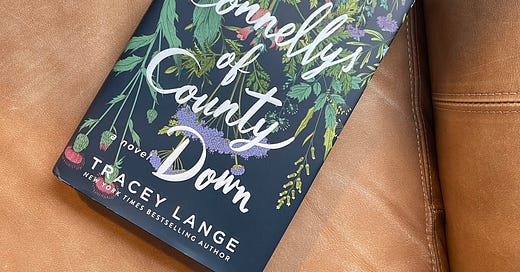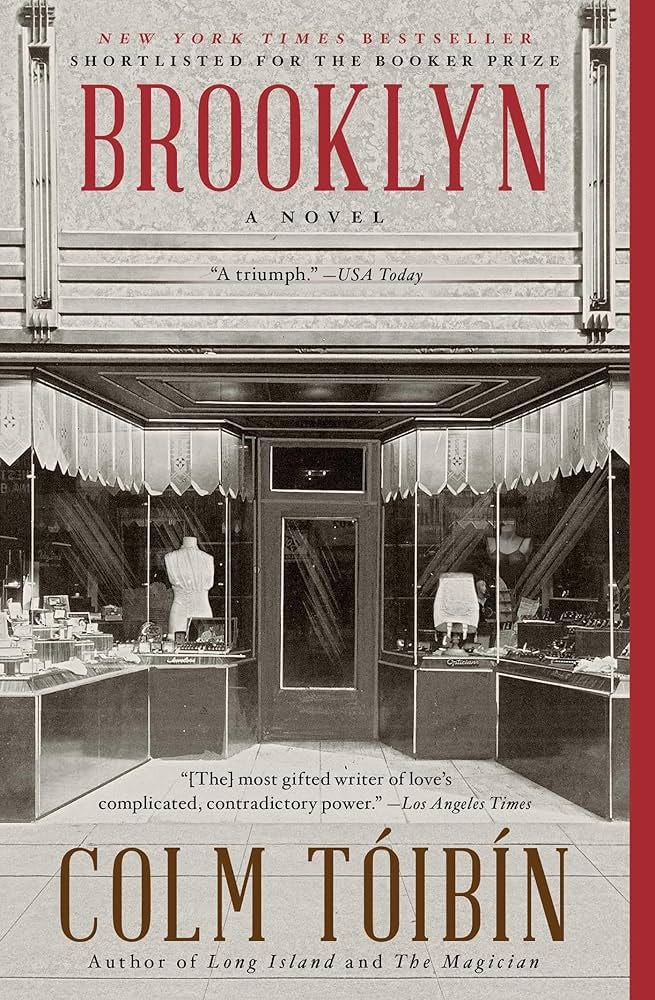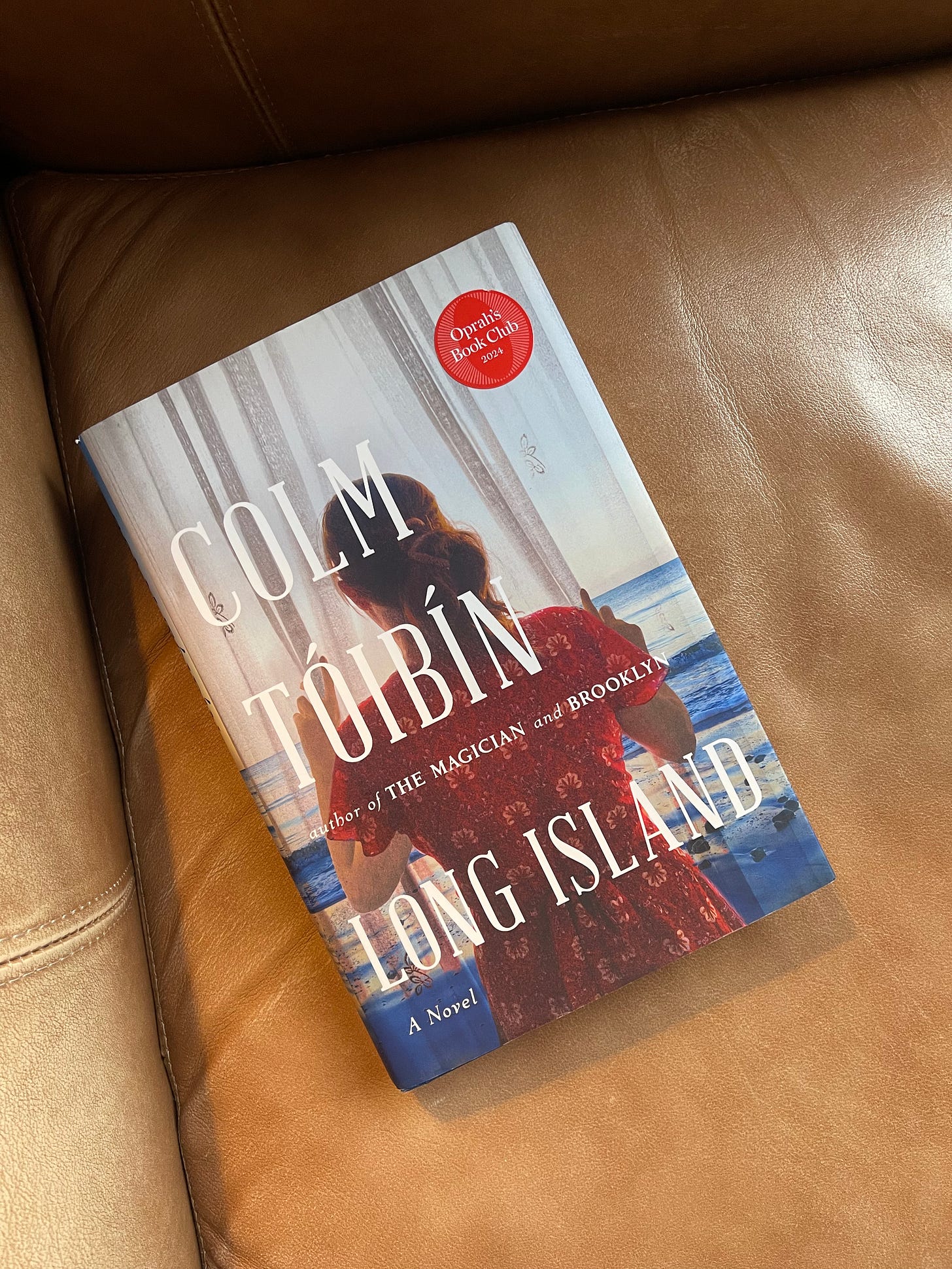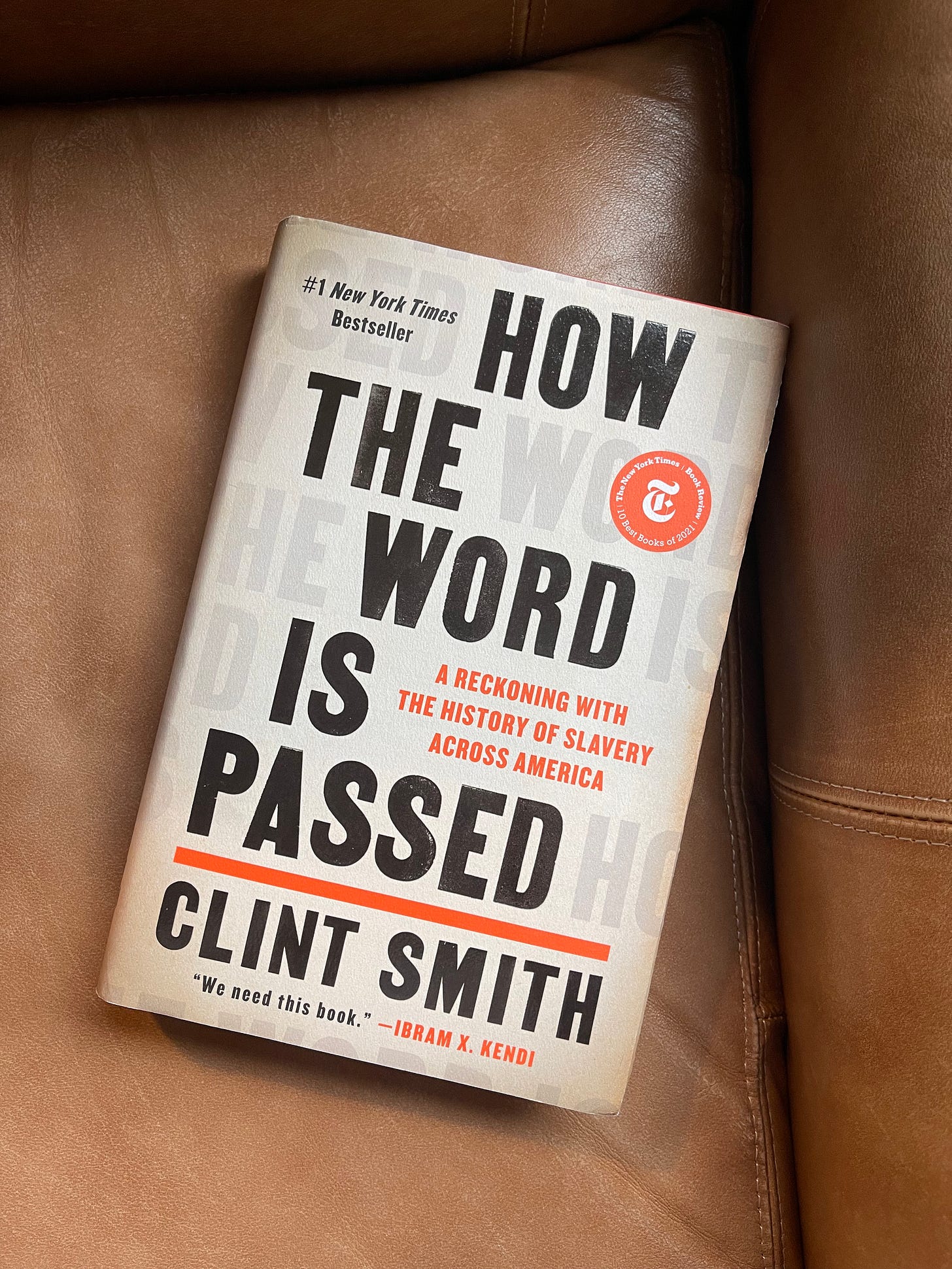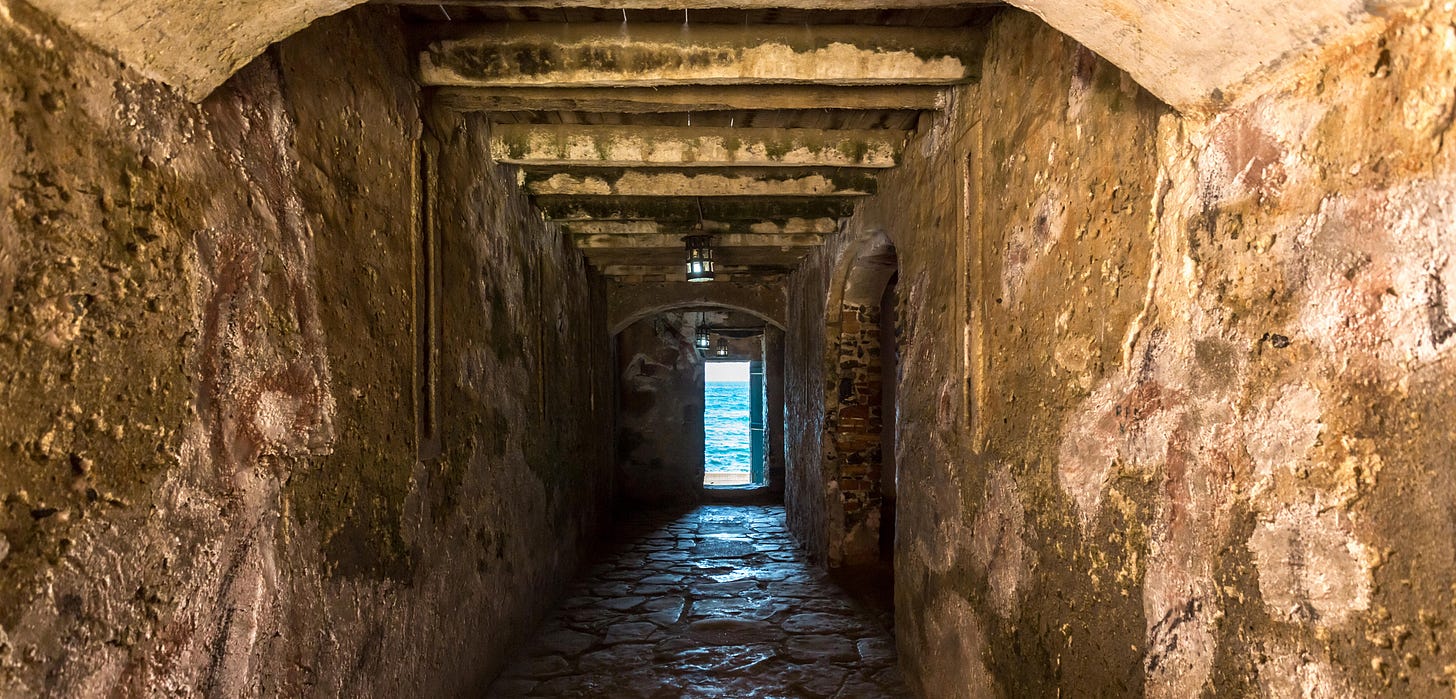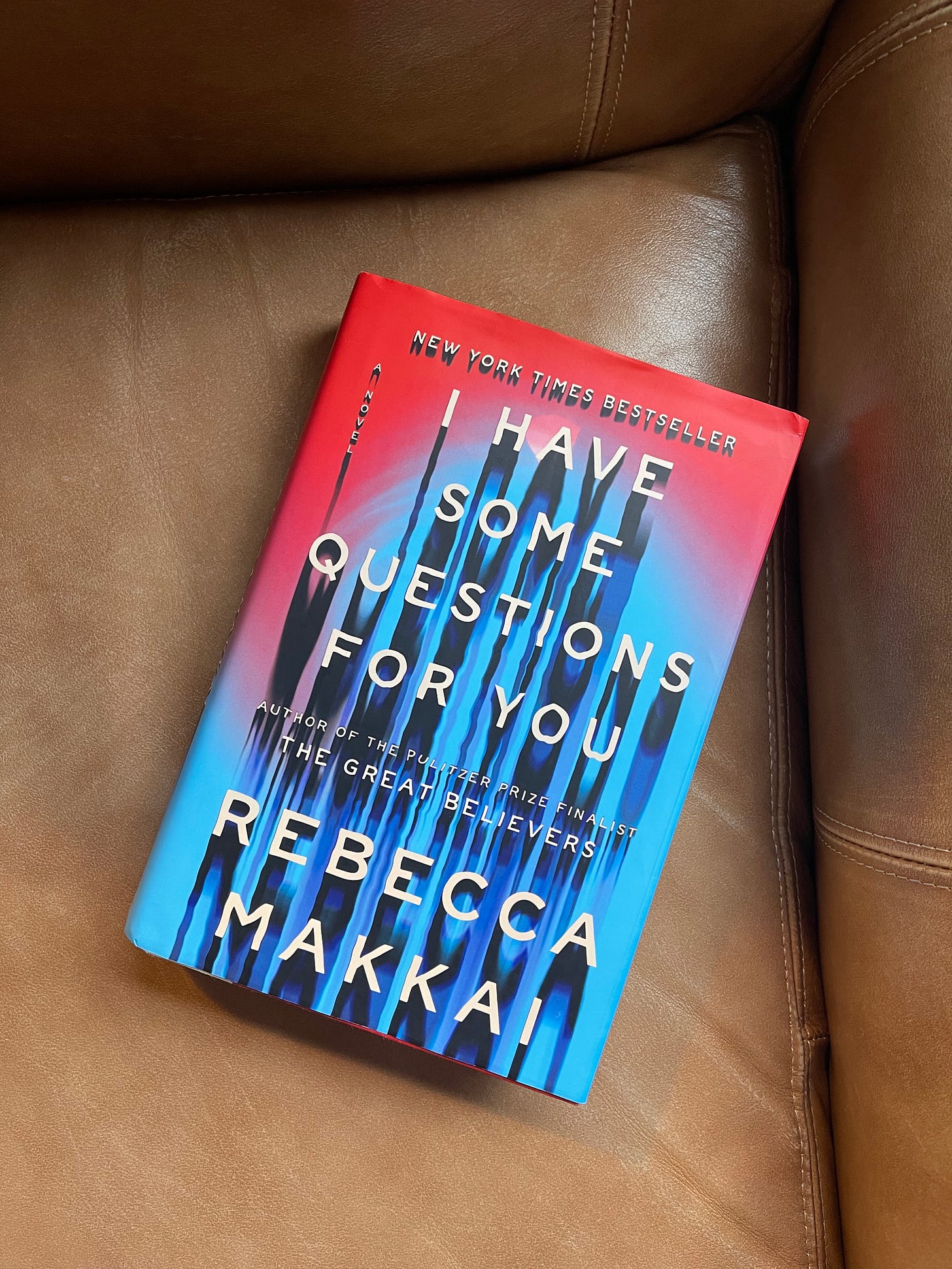Happy New Year, dear readers! December was quite a tailspin, with crazy work deadlines and holiday preparation, but I still managed to read a few books.
As we slow-walk into 2025 (which was also my descriptor for all of December as well), I am looking back on the triumphs and tragedies, joys and jokes, ruminations and reactions of 2024. And I am framing it all in the light of Hope. Hope for what this new year can look like. Hope for mending that can still be done. Hope for brokenness to be made whole once more. Hope for a new and different way of doing life.
I’ve been reading about the female mystics (thanks,
) and I cannot help but think on Julian of Norwich as we turn to another year. Dame Julian is the author of the first book written by a woman in the English language. Let that sink in. But she is likely most famous for this promise given to her in one of her visions,"All shall be well, and all shall be well, and all manner of thing shall be well.”
This woman, this mother of the church, repeats these words from Jesus three times because we need to hear this truth over and over again, like a familiar lullaby that our mother sings over us each night. So close should these words be to our hearts. And what an encouragement they are. These are the words I am singing like a hymn into 2025.
“All manner of thing shall be well.”
Reflecting on 2024, marking a whole year here on Substack (as of February), I must say this community and readership, small & mighty as it is, has meant a lot to me. Each of you, dear readers, has meant so much to me. Thank you for being companions on my reading journey. Thank you to those who have encouraged me along the way, reminding me that I have something to say. This writing habit has been such a balm this year, and I didn’t know how much I would be blessed by it.
And what a reading year it was! I hit my goal of 75 books read this year (by the flip of the final page on New Year’s Eve…it was a close one), and I have a whole lot of books to sort through for our first RSM Reads of the Year.
*A brief programming note: I will discuss December reads in this post and post later this month about RSM Reads of the Year after I give myself time to digest and decide (it was a great year of reading, so this will be tough). If you simply can’t wait, check out my Best Reads of 2023 post below.
Another note going into 2025: I am still going to hold the monthly cadence throughout the rest of the year. I am not going to start abusing my inbox privileges. ;)
Back to our regularly scheduled programming…December reads included:
Finishing up a first book
Its disappointing sequel
An incredible reckoning with America’s foundation
An excellent second novel
An interesting mystery
Brooklyn by Colm Tóibín
This one snuck up on me. I had never heard of Eilis Lacey or her captivating persona, but I heard about the long-awaited sequel, Long Island, on a book podcast I trust. I don’t know how I missed this gem. When I found both books at our used book store, I knew it was kismet.
Eilis grew up in a small Irish town with her mother and older sister, Rose. However, in the aftermath of WWII, she couldn’t seem to find work despite being bright and ready to learn.
An Irish priest who has settled in Brooklyn offers to sponsor her journey over to New York, and she takes the leap into this strange and unfamiliar big city. She gets work on the shop floor of a department store and takes night classes to become a bookkeeper. But tragedy strikes back home in Ireland, and Eilis must return home. But will she stay in Enniscorthy, or has she made a home in Brooklyn?
One of the things I adored about this book was that you really grew up alongside Eilis. At the beginning of the book, things happen to her, and by the end, she is the architect of her own choices (for good or ill). This novel also steers clear (somehow) of the trope of immigrant-bootstraps narrative while still telling that story. The pieces of who she was back in Ireland all held up to the light of who has made herself to be in America: enigmatic, bright, and fashionable.
The heart of this book is Eilis herself, wherever she is, she is quietly observing and charming as ever in her ingenuity.
Along the way, she obtains the support of an unlikely village: Father Flood, the priest who sponsored her passage; Miss Kehoe, her curmudgeon landlady; and Tony, an Italian boy who is head over heels for her.
She showcases an imperfect strength in so many key decision points in this novel, and I just fell in love with her. I could not put this one down, and I swiftly picked up Long Island.
Long Island by Colm Tóibín
I don’t typically like to punish authors with fewer stars because I didn’t like what they wrote plot-wise, but unfortunately, this book took a beloved character and reshaped her into something altogether disappointing. This book also just felt like a 300-page filler episode for a third book.
The Eilis of this book is in zero ways the Eilis of Brooklyn (which I loved). She may be the Eilis of the beginning of Brooklyn, but all of the growth she experienced throughout that first novel has vanished. She is again in a place where terrible things just happen to her, and she seems to have no agency whatsoever. Comedies of errors and lies come unraveled, and all she can do is stare at the wreckage.
Tony is not Tony. He was such a disappointment. And even his boisterous Italian family that welcomed Eilis in with open arms, comes off exclusionary and neglectful toward their Irish daughter-in-law. And her two children, Rosella and Larry, feel like cardboard cutouts.
The news that devastates their marriage is on the inside cover, so it’s not a spoiler: Tony has fathered a child with another woman, and the angry husband comes to Eilis’ front door, and this stranger says he will leave this baby on their front doorstep on the day the child is born.
Eilis decides to go back to Enniscorthy to cool off and try to ascertain what to do: should she leave Tony, or should they try to make things work? While over in Ireland, she reconnects with old friends, family, and some unexpected others. She finds herself rekindling an old love that she thought was long past.
Toibin’s lyrical prose and deep introspection were present, but the characters' choices seemed so very misaligned with who they left off being at the end of Brooklyn. They all made perfectly indefensible and random decisions. Especially for Eilis and Jim, every decision and white lie was utterly random and not thought out in the slightest.
I feel like I just put this book on blast after gushing over the first book—but I was really disappointed. This one gets three stars from me—just for the pretty prose. I would still read other books by Tóibín. He’s a brilliant author; I just wouldn’t want these same characters to reappear.
How the Word is Passed by Clint Smith
What an incredible reckoning, indeed. I love Clint Smith’s poetry and podcasting, but this was my first piece of nonfiction authored by him. The writing is beautifully journalistic, focused on the storytelling and, most of all, the people, bringing humanity to one of America’s most inhumane scars of its past that has borne so much pain into our present.
Smith takes the reader on a journey across the US, showing the breadth and depth of slavery’s effects on this country, from its founding through to today. This is going to be a longer review because I feel this book was important enough to merit close study and in-depth sharing with all of you. Go buy this book. And then I’d love to hear your reflections!
———
Beginning at Monticello in Virginia, where the author of “All Men Are Created Equal” held over 130 people as property. The chapter discusses a host of reckonings, key among them the line between history and nostalgia. It is easy to think of Thomas Jefferson in the Blurs of Independence and the American Story, but this must be held alongside what was taken from so many lives who worked under horrific conditions on this beautiful plantation.
However, these programmatic shifts toward acknowledging and telling the story of Sally Hemings and countless other enslaved people are a recent addition. For the first 30 years of the tours' existence, they were given by Black men dressed in the livery of enslaved people, some of whom were direct descendants of those enslaved on this land.
———
Next, he travels to the Whitney Plantation in Louisiana, which is a far cry from almost all of the country's plantations. You won’t find weddings or celebrations on these lands. The Whitney has, from its modern tour era, centered on the experience of the enslaved. As its primary source material, the Whitney uses first-hand accounts from the Federal Writers’ Project, a New Deal WPA initiative focused on recording and compiling accounts from formerly enslaved people.
The Federal Writers’ Project gathered 2,300 firsthand accounts and 500 photographs that detail the cruel institution’s effects on individual lives. I was amazed and moved by this 1930s American priority.
———
Smith also tours Angola Prison, which links the slavery institution from this plantation to the convict leasing system whereby plantation owners could replace the labor force lost to emancipation by utilizing convicted criminals. These forced laborers were overwhelmingly Black and overwhelmingly poor. Conditions under this system were even worse, as there was no incentive to treat these laborers well; they were so easily replaceable.
The average prisoner would not survive more than six years.
The violence continued through the Angola Prison rodeo and its Gladiator-style gore, the horrors inflicted on those in the Red Hat cell block, and executions by the electric chair; Angola today has gone from one of the most violent prisons to a place with a thriving seminary behind bars. However, 71% of the prison population is serving a life sentence, and 75% of the total population of Angola is Black.
The average sentence in Angola prison is 87 years.
———
Next was a chapter that shocked me to my core. Smith focuses on the Lost Cause mythology through the lens of Blandford Cemetery in Petersburg, Virginia. Buried here are 30,000 Confederate soldiers. Within the cemetery is a deconsecrated Anglican Church which holds within it some of the most egregious fusion of Church and State. This church is home to Tiffany-stained-glass windows (yes, that Tiffany), one dedicated to each state in the confederacy. Each one has a state seal, a Saint, and an inscription. For instance, South Carolina’s states,
“To the Glory of God and in memory of South Carolina’s sons who died for the Confederacy. + + + He doeth according to his will in the army of heaven and among the inhabitants of the earth.”
As a South Carolinian and someone whose ancestors upheld this Lost Cause, I was deeply unsettled by this.
Smith bravely attended a Sons of Confederate Veterans Memorial Day event, which was just so misguided, problematic, and simply hateful (for instance, one of the speakers refers to people who would like to get rid of Confederate monuments as “the American ISIS”). There is so much to unpack there, but I digress.
More stories to tell.
Buy this book.
———
On a slightly more hopeful note, Smith goes to Galveston Island, Texas, and celebrates Juneteenth with the man who fought to have it recognized as a state holiday (Al Edwards Sr.), and in 1979, his hard work paid off. In 2021, Mr. Edwards Sr. saw his life’s work honored by the whole nation when President Biden signed the bill making Juneteenth a national holiday. The celebrations in Galveston are focused on community education, youth and children have a part to play as do elders, in keeping the narrative alive. It was beautiful to read about the honesty. complexity, and joy in these celebrations.
———
Smith doesn’t stay in the South the whole time and implicates the North for its part in the economic system of slavery, as well as the actual trafficking of both enslaved persons and goods made by and for them. New York City is actually home to the second largest slave market in the US (the first is, of course, in my hometown of Charleston, SC). There is also much in this section about the vital role of Black abolitionists in the Underground Railroad, the creation of Central Park (founded on what used to be a majority Black-homeowner-neighborhood which was co-opted by the city by that terrible weapon: eminent domain), and the complicated origin story of Lady Liberty.
———
He ends this journey fittingly in Senegal, researching the origin place of the slave trade. Smith visits the Maison des Esclaves on Goreé Island off the coast of Dakar. There has been recent controversy over how many Africans were captured and held here before making the harrowing journey over the Atlantic Passage. There is uncertainty over how many enslaved persons actually walked through “the Door of No Return,” a symbolic opening from the House to the Ocean. Smith argues maybe that isn’t what matters at all:
“That door could no longer be what I had first imagined, but perhaps it did not need to be. Around 33,000 people were sent from Goree Island to the New World.
Perhaps it matters less whether they did so by walking through a door in this house or if they were marched down to a dock and made to board from there.
Perhaps it matters less that millions of people were not sent into bondage from this island but that people from this island were sent into bondage at all.
When I stood in the room in the House of Slaves that sat adjacent to the ocean, when I opened my arms and touched its wet stone walls, did it matter exactly how many people had once been held in that room?
Or was it more important that the room pushed me into a space of reflection on what the origins of slavery meant?”
This was an incredibly “brutiful” section that gave me so much to think about in terms of how much of this history has been lost and how we go about filling in gaps. I’ll leave you with some concluding words from Clint Smith:
———
...I'm left wondering if we are all just patchworks of the stories we've been told. What would it take - what does it take - for you to confront a false history even if it means shattering the stories you have been told throughout your life? Even if it means having to fundamentally reexamine who you are and who your family has been? Just because something is difficult to accept doesn't mean you should refuse to accept it. Just because someone tells you a story doesn't make that story true.” - Clint Smith
———
All in all, this is a must-read for all Americans. Clint Smith writes with his lyrical, poetic style and with a journalist’s eye for a well-told story, all while discussing some of America’s most brutal past (and present). An excellent and necessary read!
The Connellys of County Down by Tracey Lange
After the disappointment of Long Island, I was wary to give any other sequels a try for a moment. But The Connellys of County Down is less a sequel and more like Wendell Berry’s Port William: other characters living in the same town who sometimes come into the same universe.
I have to credit Powell’s Books in Portland for introducing me to Tracy Lange. The bookstore employee recommendation shelf held We Are The Brennans, so I picked it up.
I devoured that family story of love through the dysfunction, and when I heard she had another novel coming out, I preordered right away.
This one did not disappoint. Taking place in the same small, working-class town south of NYC as her debut novel, this is the story of the Connellys, a trio of now-adult siblings who had to grow up much earlier than was kind. They lost their mother to cancer when they were all young and were abandoned by their father not long after.
Tara, the youngest, has just been released from prison, where she served 18 months for a drug charge.
Eddie, the middle sibling, works at a local construction company and suffered a traumatic brain injury at the age of 13 after getting into a terrible car wreck with his father.
Their dad disappeared from their lives at the scene of this same wreck, afraid of the consequences of his own illicit actions.
And the eldest, Geraldine, had to take over running the family when their mother got sick. During the beginning of high school, she handled homework, household budgets, and groceries and kept the siblings together despite DHS.
Now, all of the Connelly kids are grown up and all living under one roof again after Tara returns home. As Geraldine and Eddie both struggle with what the last two years have done to them and as Tara does the same from a very different perspective, these close-knit-by-necessity siblings learn together (and with the help of a wonderful therapist) what it truly means to support one another. No matter what.
Lange’s books are not about the plot, I mean the plot is there and interesting, but it is about the familial relationships. She asks the question: what is underneath that boisterous Irish family? And peels back the layers a bit at a time.
It was an absolutely delightful read, where, at times, I wanted to shout at characters, “Quit ruining everything!” and at other points, I wanted nothing more than to draw everyone into a big group hug. That is part of Lange’s narrative gift, she can write deeply flawed characters that you absolutely can’t help but root for.
Highly recommend her work!
I Have Some Questions for You by Rebecca Makkai
Wow, this was quite the read! And I could not put it down!
Set at a boarding school in the middle of nowhere New Hampshire, Bodie Kane is a podcaster and author who returns to her alma mater two decades later to teach a mini-mester course. She hasn’t returned to this place that holds the memories of a painful adolescence but also a deeper darkness: the murder of her former roommate, Thalia, during their senior year. What happens is a reckoning of the past gauged with the world of today, where these tragedies are a dime a dozen. Bodie finds herself in the middle of questions about what really happened to Thalia and whether the man sitting behind bars was truly her killer. As she teaches her course on podcasting, her students discover her link to this storied case and begin to peel back the layers for themselves, and lots of plot twists ensue.
This book is, at its core, about the plight of women in America today, an interrogation of our obsession with true crime, and also a pretty stern judgment on the quick hot takes of Twitter. This book dealt with some complex topics and shed light on the problems of oversimplifying anything from either side of a story down to a slogan, whether it be “boys will be boys” or “believe women.”
I really appreciated the way Makkai asked these questions in a way that was direct, not leaving a lot of room for moralizing or obfuscating. She got to the heart of stories like this one:
American culture is inherently violent, and we have a strong predilection to commoditize this violence in a way that cheapens our humanity.
Full stop.
I have a lot of respect for that message, and while there were a few moments that felt pedantic, the book, on the whole, steered clear of coming off too preachy.
A solid tailspin of a read with lots to say about America today.
Well, that’s all there is for this December reads list. Thank you for joining me here for another month, dear readers!
See you soon for RSM Reads of the Year: 2024 Edition!
From my shelves to yours,
-RSM


